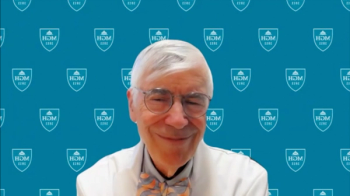
TENS Has Potential as a Treatment for Chronic Cough, Small Study Finds
A small study found that patients with chronic cough saw improvements in symptoms following transcutaneous electrical nerve stimulation treatment, with minimal adverse effects.
A study published in
The study also pointed out that participants experienced minimal adverse effects during and after treatment.
“Patient-reported stimulation of the appropriate anatomic area that corresponded to their symptoms demonstrated feasibility,” the study authors said. “This study can inform future research by providing evidence of tolerable TENS device settings and methods for application.”
TENS is a form of electroanalgesia used for neuropathic pain disorders; in healthy participants, it has been found to increase the somatosensory threshold throughout the stimulated receptive field of the applied current. Availability, affordability, ease of use, and relative lack of side effects or drug interactions are all advantages of TENS. While this noninvasive treatment may have a more pronounced effect on hypersensitive neurons compared with normal neurons, that effect is theorized to underlie its efficacy in treating neuropathic conditions.
The study only included 5 participants with refractory chronic cough; all participants were female with a mean age of 73 years. One participant was White, 2 were Black, and 2 were Hispanic or Latin American.
All participants completed the Cough Severity Index (CSI) and Newcastle Laryngeal Hypersensitivity Questionnaire (NLHQ) to evaluate the baseline characteristics of their cough. The mean CSI score was 25.6 and the mean NLHQ score was 14.8.
For the TENS treatment, participants were seated in a semi-reclining position and the cricoid cartilage, thyroid cartilage, hyoid bone, and thyrohyoid membrane were identified. The researchers used the TENS LGMedSupply LG-3000 unit and attached lead wires to self-adhesive electrode pads.
“For all patients, the cathode was placed over the left thyrohyoid membrane, approximating the location of internal branch of the superior laryngeal nerve, and the anode was placed over the left paramedian cricothyroid space,” the authors explained. “Leads were applied unilaterally to the left side to avoid possible bradycardia through stimulation of the right vagus nerve.”
To assess tolerability, the researchers performed a flexible laryngoscopy prior to TENS activation. They did not use an intranasal lidocaine or decongestant in order to prevent topical anesthesia from being an uncontrolled variable. Visual inspection of the external anterior cervical musculature was used to measure contractions. To assess feasibility, visual inspection was used to measure pad movement.
“As the TENS unit was powered on and gradually increased to the maximum tolerated intensity, the larynx was monitored for any abnormal motion, spasm, or muscle contraction deemed outside of the normal range of motion on a standard laryngologist assessment,” the authors noted. “After the maximum tolerated intensity was reached, the flexible laryngoscope was withdrawn, and the patient underwent continued TENS treatment.”
TENS treatment consisted of two 15 minute sessions with a 2 minute break in between.
During each 15 minute session, the unit was kept at a frequency of 120 Hz and a short pulse duration of 120 µs. Intensity slowly increased to the maximum tolerated intensity, which was then maintained for the duration of each session.
Participants rated symptoms before, during, and after TENS treatment using a 5-point Likert scale ranging from 0 to 4, with 4 being the highest severity of chronic cough symptoms.
Each participant rated their symptoms before, during, and after treatment, respectively, as follows:
- Participant 1: 0, 0, 0
- Participant 2: 3, 1, 1
- Participant 3: 2, 0, 0
- Participant 4: 1, 2, 2
- Participant 5: 4, 3, 2
The mean rating before, during, and after TENS treatment was 2, 1.2, and 1, respectively.
Participant 4 was the only one to report an increase in symptoms. This was noted as new-onset mild hoarseness that had completely resolved within 24 hours after treatment, though the exact duration was not reported. The researchers observed normal vocal cord motion and did not observe any signs of laryngospasm or involuntary vocal fold adduction or contraction.
While acknowledging the small and homogenous sample in the study, the authors still said TENS treatment for chronic cough it tolerable, feasible, and demonstrated a trend toward improved symptoms during and immediately after treatment.
“Future studies that are designed to evaluate the long-term benefits of TENS application in a controlled office setting would be beneficial,” they said. “Additionally, since there is currently no evidence substantiating TENS as a standalone treatment for neuropathic cough, it would also be beneficial to study TENS administration as an adjunct treatment.”
Reference
Michalowski A, Haines A, Shaparin N, et al. Transcutaneous electrical nerve stimulation as a treatment for neuropathic cough: a tolerability and feasibility study. Neurol Ther. Published online May 18, 2021. doi:0.1007/s40120-021-00255-2
Newsletter
Stay ahead of policy, cost, and value—subscribe to AJMC for expert insights at the intersection of clinical care and health economics.





























































